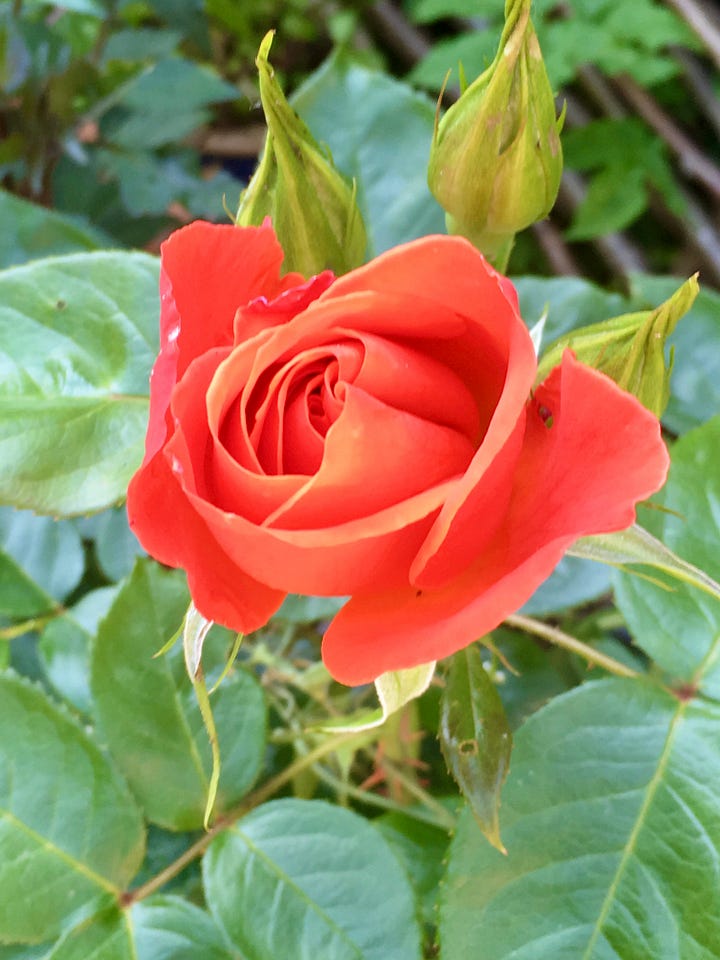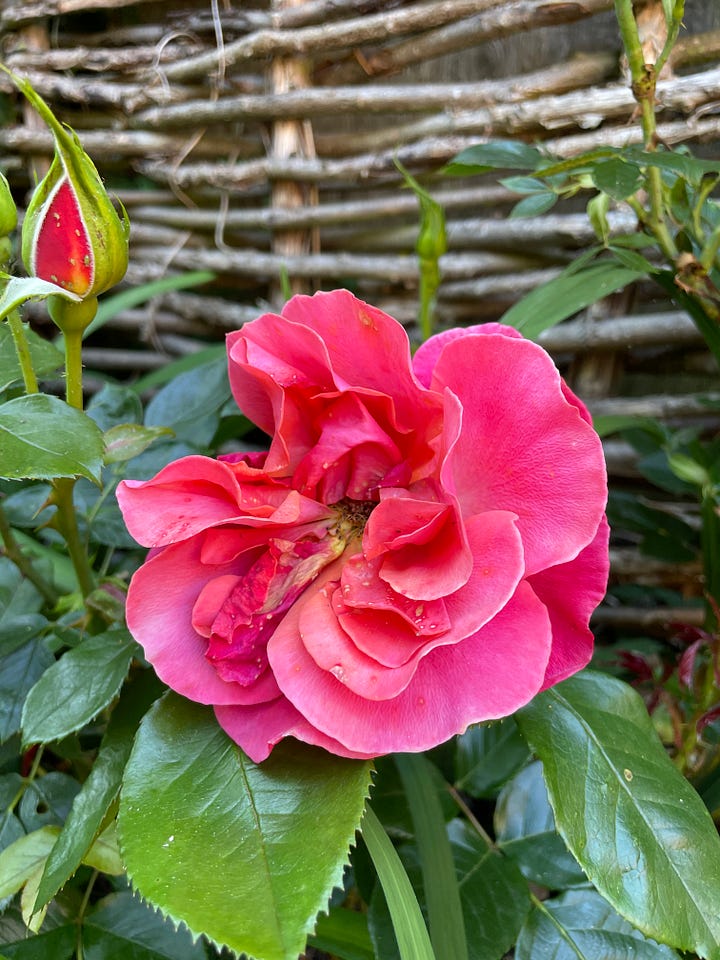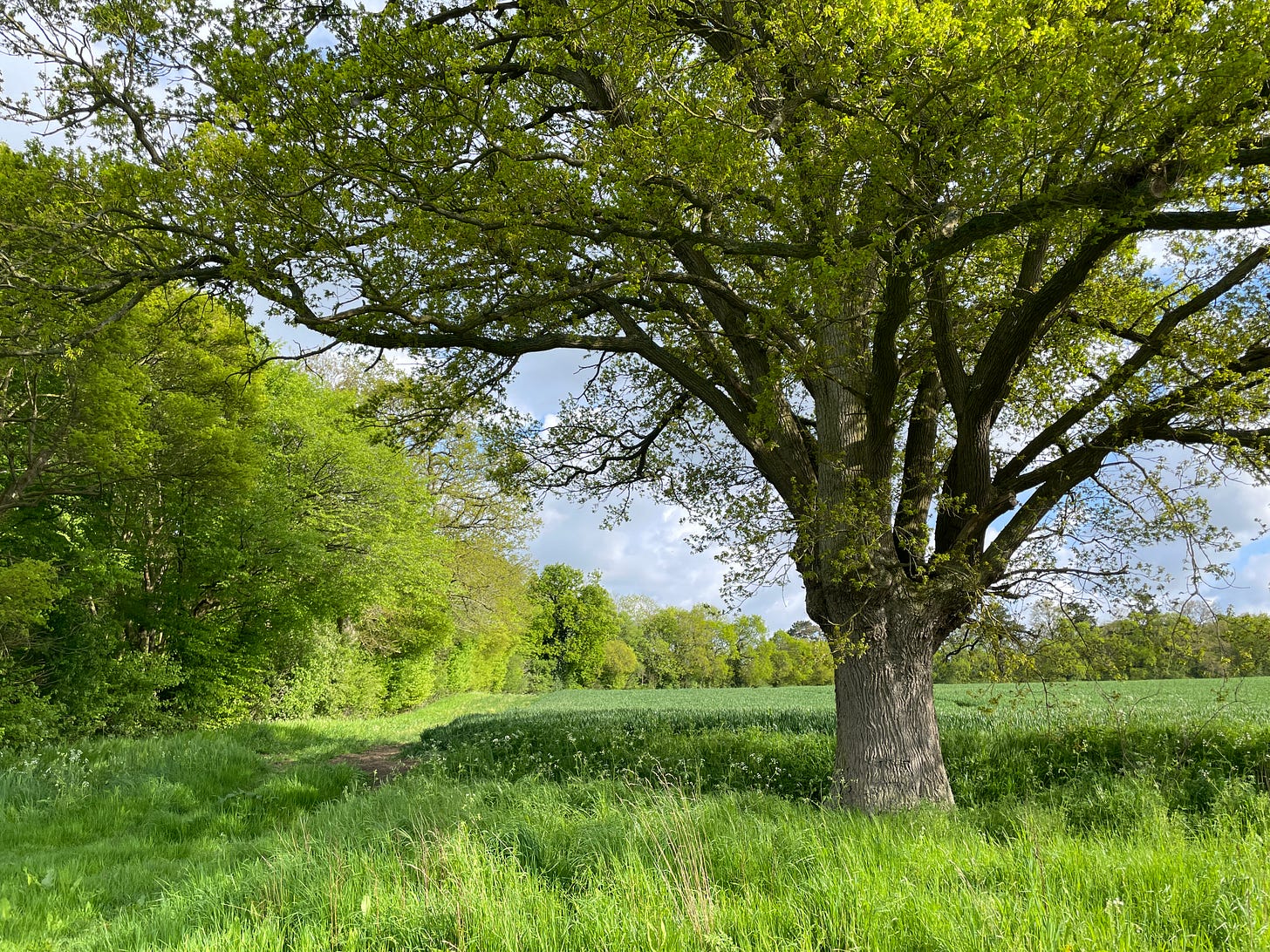Hi. How are you doing?
This newsletter might be too long for email, so if you’re reading it in your inbox and it truncates, please open it in the app. The first part is free, the second part is for paying supporters.
A few days ago I found a prehistoric flint tool in a field. I’ve no idea how my eye singled it out: I was walking behind my friend and her dog, on a narrow path through stiff and bluish calf-high wheat, and when a wheeling set of tramlines crossed the path I glanced to the left where an arc of bare, sandy soil was littered with stones. One snagged my eye, so I stooped and slipped it into my pocket, sandy and warm, hardly breaking step or interrupting the flow of our speech.
I often describe myself as a good ‘downward noticer’: pellets, poo, feathers, bones and interesting stones do tend to catch my eye, and in summer the back of my neck is perpetually tanned. But I have no experience in knowing which flints, in these heavily cultivated fields, have been plough-struck, and which shaped by human hands. And yet the finds officer at my local Records Office has confirmed my flint as a Neolithic or early Bronze Age scraper. Something in me, in a brief glance, knew. But what?
There’ll be more on my flint – and on time, and place, and our relationship to the physical world and its inescapable mutability, and how contemporary novels do and don’t deal with that – below the fold. Paying supporters also have access to my Sunday audio series in which I’m reading my first novel, Clay, and chatting a bit about how it was written and how it strikes me now, all these years later. I hope you’ll join us.
If you don’t want to subscribe to Witness Marks but would like to support my various endeavours – perhaps you still like listening to the Stubborn Light podcast, or you’re enjoying using the free Encounter app – this button is for you. Thank you.
It was my turn for the Nature Notebook in The Times yesterday (June 14th). I wrote about the great pulse of rain that finally reached us in east Suffolk after so many weeks of drought, and the transformation it wrought; and about the return of bitterns to these islands after they were reduced to just eleven known males. Their recent increase in both numbers and distribution hasn’t been one of those happy accidents but is due entirely to incredibly focused, doubtless expensive and long-term conservation work, mainly by the RSPB.
If you don’t know anything about bitterns, here are the two main takeaways: they are to all intents and purposes completely invisible, and they sound absolutely bizarre. If the sound of the male calling gives you the snorty giggles I do apologise.
While I think of it: my pieces for The Times are collected together here, should you wish to investigate. I write two short Nature Notes a week, and a longer Nature Notebook every five weeks or so. They are sometimes paywalled and sometimes not. ¯\_(ツ)_/¯
An old friend was in town, someone I used to go to clubs with back in the 90s when we both had lowly jobs in publishing: he moved to Ibiza a few years later and became a professional DJ while I moved from books to magazines (Mixmag) and at last ended up on the other side of the editorial desk. For old times’ sake, we booked tickets for Darren Emerson’s ‘In Pursuit of Repetitive Beats’ VR show at the Barbican. And it absolutely blew me away.
I’d never experienced VR and had no idea what to expect. As I was being strapped into a vibrating vest and fitted with a headset and headphones and given controllers for each hand I looked around at the black room with neon markings on the floor and the dozen or so people being similarly kitted out, and wondered what the hell was about to happen to me. And then it began, and after a couple of minutes of feeling a bit dizzy and overwhelmed I just – let go – and it was real, and I was in it, and my body believed everything that was happening*. And oh, my heart.
If you’d like the chance to be a kid in Coventry in 1989, looking for an illegal rave (and finding one!), this ‘VR adventure’ is on until August 3rd. But while I thought it was absolutely extraordinary, your mileage will vary. Not everyone has deep roots in club culture; not everyone will recognise each track played or have visceral memories the experience will trigger. Not everyone cares about the early years of acid house and illegal raves, or the cultural or societal changes that era brought about. Me? Well, for 40 minutes I was young again, full of joy and possibility. I’m not ashamed to say it made me cry a little bit, inside my headset. I felt such gratitude at being able to find and rekindle a part of me that I thought had faded away.
* Obviously I’m slightly haunted by the fact that in ‘reality’ I was moving around in silence, watched by several facilitators, as I occasionally gasped or laughed, and then lost my shit and just danced. But so was everyone else, so who cares?
A good year for the roses
From raves to roses: that’s what the passage of thirty years will do to a person. Hey, I’m leaning in to it. Mutatis mutandis, &c.
But GOD, this really is a good year for the roses: peeking over fences, tumbling down house-fronts, strewing petals over paths and pavements, rose bushes and hedges absolutely laden with blooms wherever you look: the result, I suppose, of record sunshine levels this spring. When I moved in to my little Suffolk cottage in October 2019 I inherited two, both climbers – though one had been (mal)treated as a shrub – and I remember looking critically at them and saying to someone or other, ‘You know, I just don’t think I’m a rose sort of person’.
Clearly, I needed to give my head a wobble because I now have nine (9!) and I absolutely adore them. Of the two that came with the house, the one by the back door I christened Bet the Barmaid: when she bloomed, in the first lockdown, she revealed herself to be Barbie pink with an apricot tinge, looked as though she came direct from the 1970s, and was clearly tough as boots. With a bit of digging around I eventually worked out that her stable name was Compassion and she did indeed hail from the decade that style forgot, and going by her girth at ground level, was probably planted then. Previously brutalised to a shrub, I’ve now trained Bet properly (it’s a collaborative effort; we discuss each snip in great depth) and these days she flowers across the lower part of one wall of the cottage, for most of the summer, and smells glorious. How I ever could have considered rooting her out I don’t know.
However, the other climbing rose I inherited is far less amenable. She turned out to be Madame Alfred Carrière, an imperious, 19th century society lady with a vigorous growth habit and an unconquerable desire to grow to eight metres tall. There is simply no reasoning with her as there is with Bet: the only thing to do, I’ve found, is treat her mean, and twice a year. To be fair, she’s been planted in entirely the wrong place for a rose of her vaunting ambition, so the best I can hope for during my time as her supervisor is an uneasy detente. And for her not to take my gutters off.
To that original pair I have added the glorious and almost thornless repeat rambler Ghislaine de Féligonde, pictured above, who needs almost nothing from me and is, as I type, alive with pollinators; Sceptr’d Isle, whose cupped pink blooms on upright stems smell deliciously of liquorice, and who doesn’t mind a bit of shade; Young Lycidas, who flops and slumps about foppishly more than I would like but whose leaves are a favourite with leafcutter bees; and most recently the marmalade-coloured Roald Dahl, who lives in a large pot and smells beautiful, but hasn’t quite got the hang of things yet. It’s possible he’s a bit overawed by the sheer proximity of G de F, which would be entirely understandable. But you know what? I believe in him.
Then there are are two roses I somewhat foolishly rescued from bargain bins at nurseries: Swan Lake, a delicate cream climber whose leaves get black spot every year and who still hasn’t marshalled the wherewithal to get going; and thorny old raver One Love, below, whose coral buds unfurl to red, look lovely for a couple of hours, and then thicken and fade until they resemble stale pastrami. Full disclosure: I would get rid of One Love if I hadn’t anthropomorphised her. Herewith the perils of gardening with even a moderately active imagination.


Finally there’s a cerise, small-flowered rambler I’ve grown from a tiny seedling I weeded out from the front garden, the result, I suppose, of a bird-deposited rosehip. This has been tentatively identified for me by my friend Fiona Melrose, who is a Proper Plantswoman, as American Pillar, though neither of us are quite sure. I didn’t really have room for a gatecrasher so she’s down at the end of the path near the old brick privy, scrambling up through some dense ivy that’s hiding (and probably supporting) a collapsing fence. She may not yet be living the dream, but I refuse to feel bad about her situation as the alternative was summary deportation aboard the compost bin. I like to think of my garden as the land of opportunity and her as one of the huddled masses, now breathing free.
Below the paywall I’ll be thinking about living in a particular place, at a particular time, in a mortal, animal body; and about how that is represented (or not) in modern fiction. It’s an important piece for me; I’ve been trying to think through something that I think is probably central to my writing, and in fact to everything I do.
Thank you for reading, sharing, and supporting Witness Marks. I love it that you’re here 🧡
Keep reading with a 7-day free trial
Subscribe to Witness Marks by Melissa Harrison to keep reading this post and get 7 days of free access to the full post archives.






